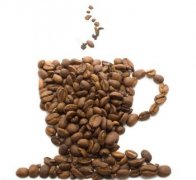The change of the preference of the traditional roasting mode of coffee roasting

Like many other things associated with cultural differences, in the past, there was a special preference for coffee bean roasting, but this phenomenon is becoming less and less obvious nowadays. As for the reasons why people prefer a particular baking model, it probably has something to do with the time they live in and the area where they live. Regional comparisons can be made on this theme: the usual roasting mode of coffee beans in Turkey is deeper than that in Saudi Arabia; the roasting in southern Italy is deeper than that in northern Italy; it is also deeper in France than in central France; in the United States, the northwest is deeper than New England (northeast); and Northern California is deeper than Southern California and New Orleans is deeper than Atlanta.
Because of the traditional preference for a particular roasting mode of coffee beans in different regions, in the contemporary American coffee industry, a special roasting mode is often referred to by the name of the region. For example, New England baking represents shallow baking, American baking represents moderate baking, Viennese baking represents a lighter depth in deep baking, French baking represents deeper baking than Viennese, Italian baking represents deeper baking than French baking. Oh, and so on. The origin and details of the baking depth will be explained later in this chapter. It will also be briefly described in the chart on pages 80 to 81, which also contains other baking-related information. However, due to the development of globalization and the prosperity of the media, the preference for the baking model that used to be separated by regions has become more and more blurred. In other words, at a roaster anywhere in North America, you can find all the coffee beans roasted in different roasting modes. The original American roasted coffee beans (medium brown roasted color with bright and dry taste) were gradually replaced by coffee beans that tasted more exciting and darker, while coffee drinks without milk foam were also replaced by cappuccino and lattes with milk foam levels.
Important Notice :
前街咖啡 FrontStreet Coffee has moved to new addredd:
FrontStreet Coffee Address: 315,Donghua East Road,GuangZhou
Tel:020 38364473
- Prev

The most basic factors that affect the taste of coffee from cinnamon baking to coke
The most important factor affecting the taste of coffee is roasting. In the case of the same raw coffee bean, at different degrees of baking, it may taste full of grass, or it may produce an empty baking flavor, either sour, bright, or dry; sometimes it will bake a full consistency, or taste delicious, round, bitter to sweet, or even
- Next

Coffee Basics Words related to "tasting"
There was a time when using language as a tool to describe how something tasted often left us speechless. But coffee professionals can use mutually intelligible words-such as flavors of foods and beverages they encounter in everyday life-to help describe what they taste in coffee. The use of such words will make it easier to put coffee
Related
- Beginners will see the "Coffee pull flower" guide!
- What is the difference between ice blog purified milk and ordinary milk coffee?
- Why is the Philippines the largest producer of crops in Liberia?
- For coffee extraction, should the fine powder be retained?
- How does extracted espresso fill pressed powder? How much strength does it take to press the powder?
- How to make jasmine cold extract coffee? Is the jasmine + latte good?
- Will this little toy really make the coffee taste better? How does Lily Drip affect coffee extraction?
- Will the action of slapping the filter cup also affect coffee extraction?
- What's the difference between powder-to-water ratio and powder-to-liquid ratio?
- What is the Ethiopian local species? What does it have to do with Heirloom native species?

